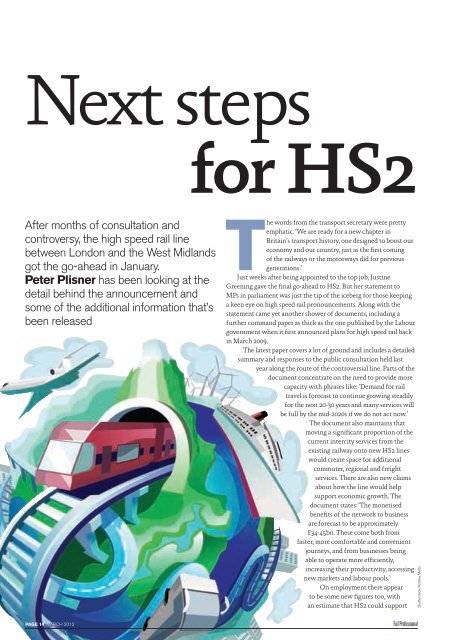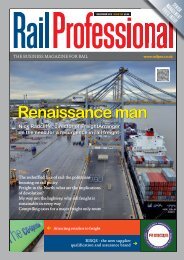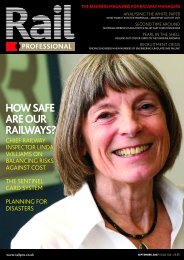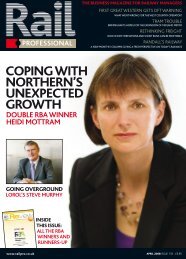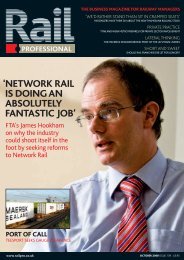View as PDF - Rail Professional
View as PDF - Rail Professional
View as PDF - Rail Professional
You also want an ePaper? Increase the reach of your titles
YUMPU automatically turns print PDFs into web optimized ePapers that Google loves.
Next steps<br />
for HS2<br />
Shutterstock/ Vitek12<br />
After months of consultation and<br />
controversy, the high speed rail line<br />
between London and the West Midlands<br />
got the go-ahead in January.<br />
Peter Plisner h<strong>as</strong> been looking at the<br />
detail behind the announcement and<br />
some of the additional information that’s<br />
been rele<strong>as</strong>ed<br />
The words from the transport secretary were pretty<br />
emphatic. ‘We are ready for a new chapter in<br />
Britain’s transport history, one designed to boost our<br />
economy and our country, just <strong>as</strong> the first coming<br />
of the railways or the motorways did for previous<br />
generations.’<br />
Just weeks after being appointed to the top job, Justine<br />
Greening gave the final go-ahead to HS2. But her statement to<br />
MPs in parliament w<strong>as</strong> just the tip of the iceberg for those keeping<br />
a keen eye on high speed rail pronouncements. Along with the<br />
statement came yet another shower of documents, including a<br />
further command paper <strong>as</strong> thick <strong>as</strong> the one published by the Labour<br />
government when it first announced plans for high speed rail back<br />
in March 2009.<br />
The latest paper covers a lot of ground and includes a detailed<br />
summary and responses to the public consultation held l<strong>as</strong>t<br />
year along the route of the controversial line. Parts of the<br />
document concentrate on the need to provide more<br />
capacity with phr<strong>as</strong>es like: ‘Demand for rail<br />
travel is forec<strong>as</strong>t to continue growing steadily<br />
for the next 20-30 years and many services will<br />
be full by the mid-2020s if we do not act now.’<br />
The document also maintains that<br />
moving a significant proportion of the<br />
current intercity services from the<br />
existing railway onto new HS2 lines<br />
would create space for additional<br />
commuter, regional and freight<br />
services. There are also new claims<br />
about how the line would help<br />
support economic growth. The<br />
document states: ‘The monetised<br />
benefits of the network to business<br />
are forec<strong>as</strong>t to be approximately<br />
£34-45bn. These come both from<br />
f<strong>as</strong>ter, more comfortable and convenient<br />
journeys, and from businesses being<br />
able to operate more efficiently,<br />
incre<strong>as</strong>ing their productivity, accessing<br />
new markets and labour pools.’<br />
On employment there appear<br />
to be some new figures too, with<br />
an estimate that HS2 could support<br />
Shutterstock/Andrew Metto<br />
Page 14 march 2012


